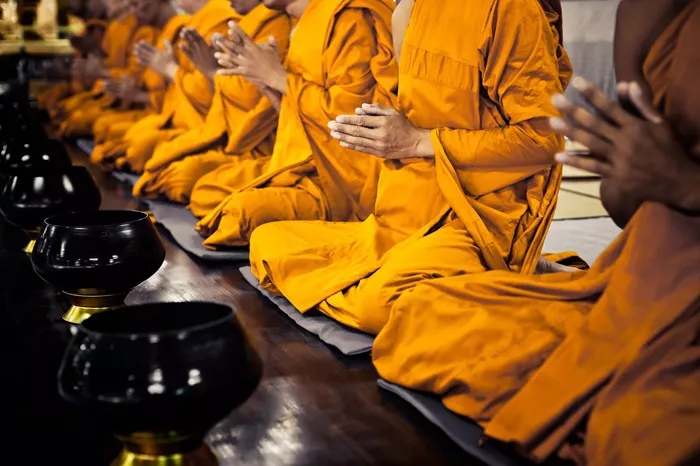Theravada Buddhism is one of the oldest forms of Buddhism. It is based on the earliest teachings of the Buddha. Theravada means “Teaching of the Elders” in Pali, the language of the texts. This form of Buddhism is known for its strict adherence to the original teachings and practices.
The Spread of Theravada Buddhism
Theravada Buddhism started in India. It then spread to other parts of Asia. Today, it is mostly found in specific regions. These regions have a strong cultural and historical connection to Theravada Buddhism.
Countries Where Theravada Buddhism is Predominant
Sri Lanka
Sri Lanka is one of the most important centers of Theravada Buddhism. The religion was introduced to the island in the 3rd century BCE. It has played a significant role in the country’s culture and history. Many ancient temples and monasteries can be found here.
Thailand
Thailand is another major country where Theravada Buddhism is practiced. Over 90% of the population follows this form of Buddhism. The Thai king is considered a protector of the religion. Temples, known as “wats,” are common throughout the country.
Myanmar (Burma)
Myanmar, also known as Burma, has a long history with Theravada Buddhism. It is deeply ingrained in the daily life of the people. Monks are highly respected, and many young men spend time as monks. The Shwedagon Pagoda in Yangon is a famous Buddhist site.
Cambodia
Cambodia is another country where Theravada Buddhism is the main religion. The famous Angkor Wat temple complex was originally a Hindu temple but later became a Buddhist site. Buddhism plays a central role in Cambodian culture and society.
Laos
In Laos, Theravada Buddhism is the predominant religion. It influences many aspects of life, including art, architecture, and festivals. The city of Luang Prabang is known for its many Buddhist temples and monasteries.
Vietnam
While Mahayana Buddhism is more common in Vietnam, there are still communities that practice Theravada Buddhism. These communities are mainly found in the southern part of the country.
Bangladesh
In Bangladesh, Theravada Buddhism is practiced by a small percentage of the population. The Chittagong Hill Tracts region is home to many Buddhist communities.
India
Although Buddhism originated in India, it is not the dominant religion today. However, there are still some regions, like parts of Bihar and Sikkim, where Theravada Buddhism is practiced.
Theravada Buddhism in the Western World
United States
In the United States, Theravada Buddhism has been growing. Many meditation centers and monasteries have been established. These centers often follow the teachings of famous monks from Southeast Asia.
Europe
In Europe, countries like the United Kingdom, Germany, and France have seen an increase in Theravada Buddhist communities. These communities often consist of immigrants from Southeast Asia as well as Western converts.
Australia
Australia also has a growing number of Theravada Buddhists. Many temples and meditation centers have been established, particularly in cities with large Southeast Asian communities.
Characteristics of Theravada Buddhism
Focus on the Pali Canon
Theravada Buddhism places a strong emphasis on the Pali Canon. This is a collection of scriptures believed to be the earliest recorded teachings of the Buddha. Monks and nuns study these texts extensively.
Monastic Life
Monastic life is central to Theravada Buddhism. Monks and nuns follow a strict code of discipline known as the Vinaya. They live in monasteries and dedicate their lives to meditation and study.
Meditation Practices
Meditation is a key practice in Theravada Buddhism. Techniques like Vipassana (insight meditation) and Samatha (calm-abiding meditation) are commonly used. These practices aim to develop mindfulness and concentration.
Role of the Laity
While monastic life is highly respected, laypeople also play an important role. They support the monks and nuns by providing food, clothing, and other necessities. Laypeople also practice meditation and observe moral precepts.
Theravada Buddhism and Modern Society
Adaptation to Modern Life
Theravada Buddhism has adapted to modern life in various ways. Many monasteries now offer meditation retreats for laypeople. There are also online courses and resources available for those interested in learning more.
Social Engagement
In recent years, there has been a growing movement of socially engaged Buddhism. This involves applying Buddhist principles to social issues like poverty, environmental conservation, and human rights.
Challenges
Despite its adaptability, Theravada Buddhism faces challenges. These include maintaining traditional practices in a rapidly changing world and addressing issues like commercialization and politicization of the religion.
Conclusion
Theravada Buddhism is mostly found in countries like Sri Lanka, Thailand, Myanmar, Cambodia, and Laos. It has also spread to the Western world, where it continues to grow. This form of Buddhism is known for its strict adherence to the original teachings of the Buddha, its emphasis on monastic life, and its focus on meditation. While it faces challenges, Theravada Buddhism remains a vital and dynamic tradition.

